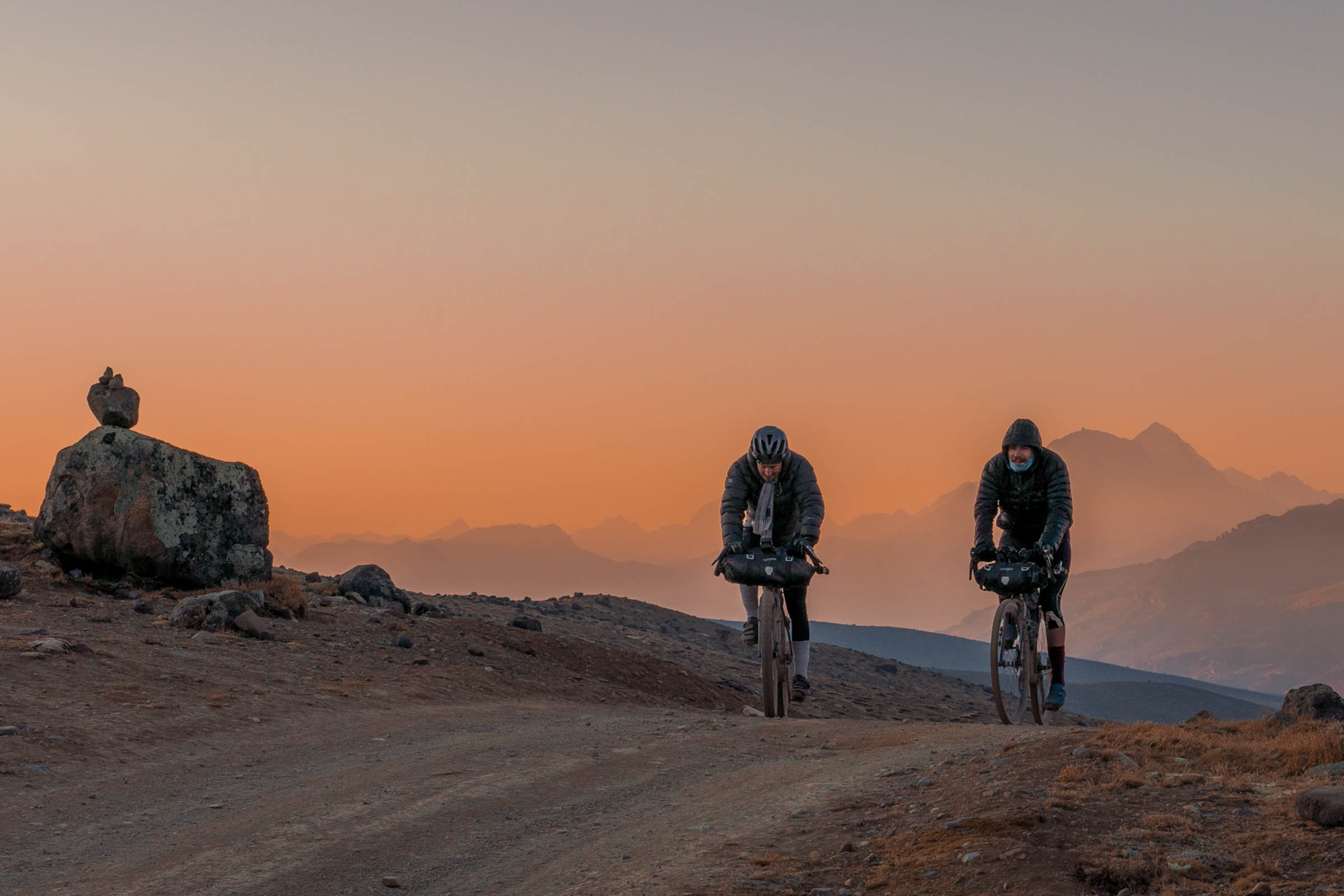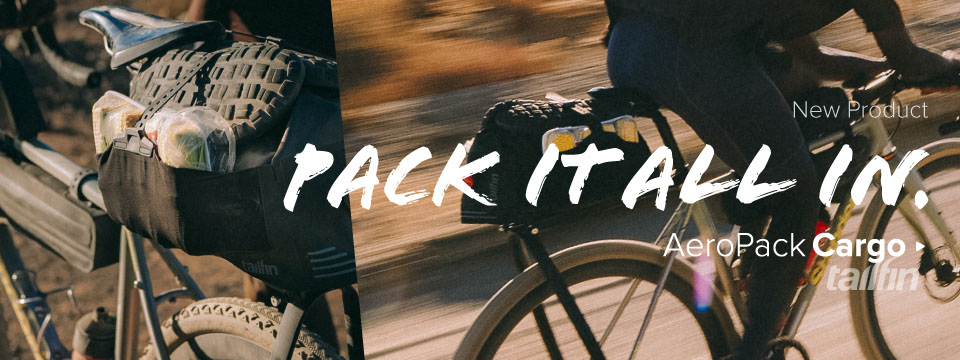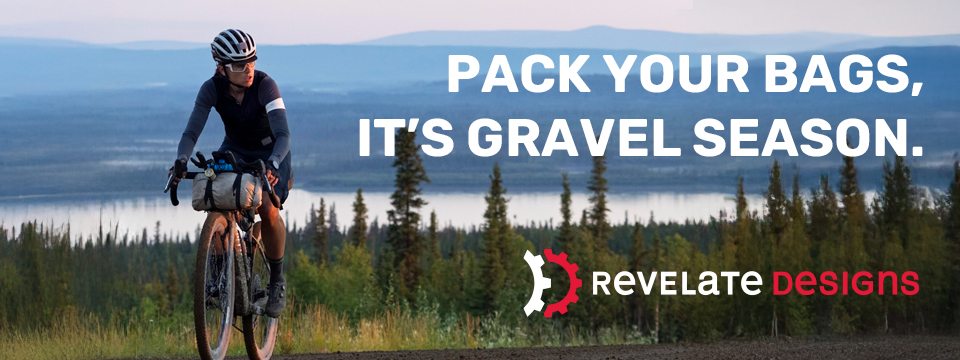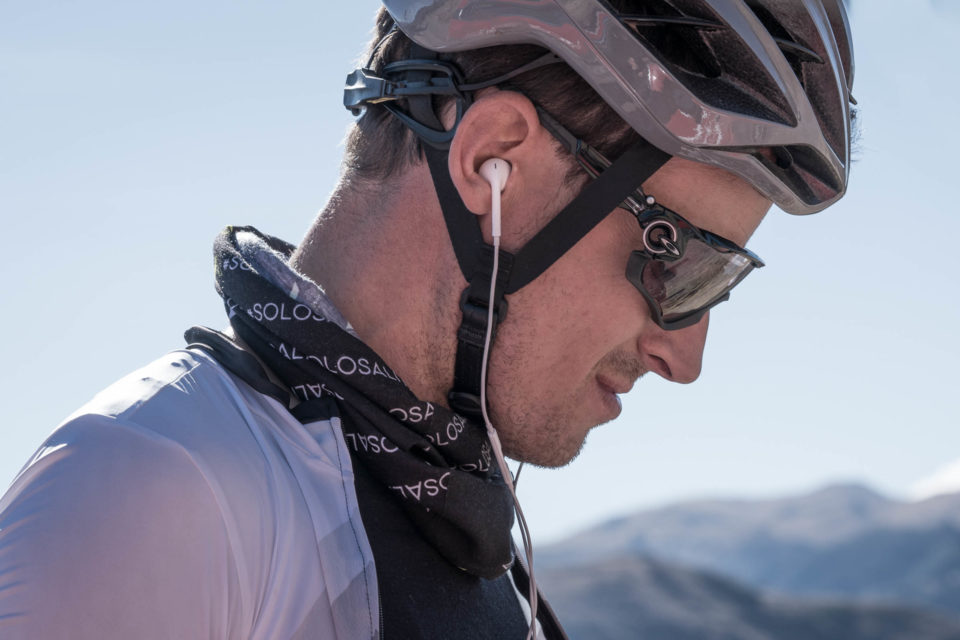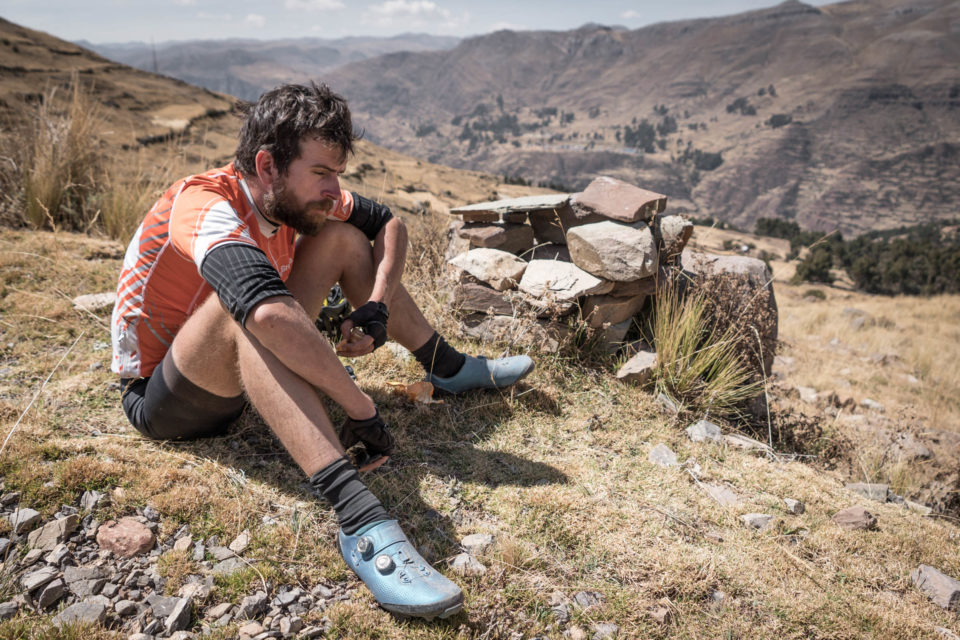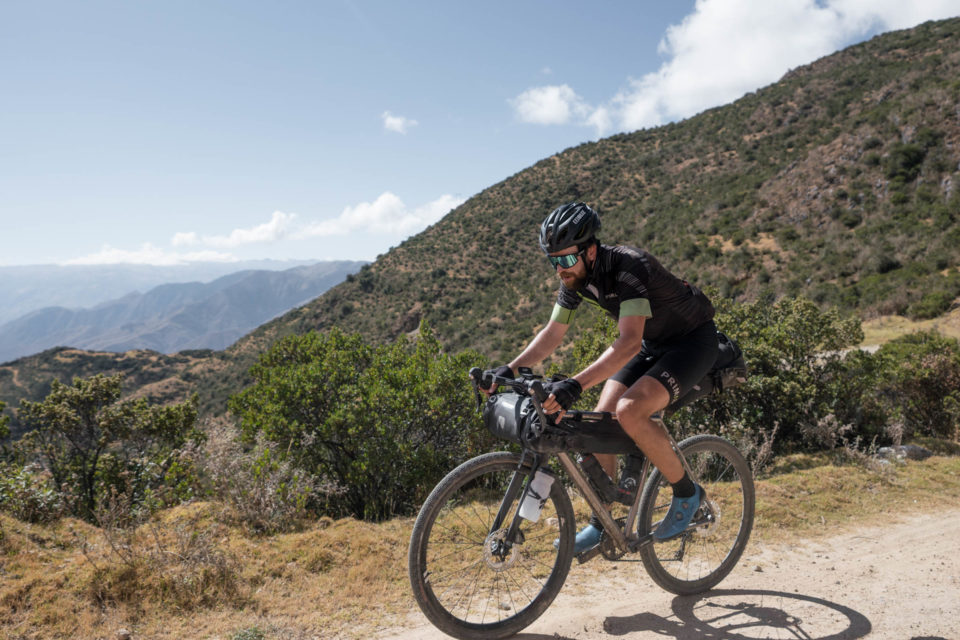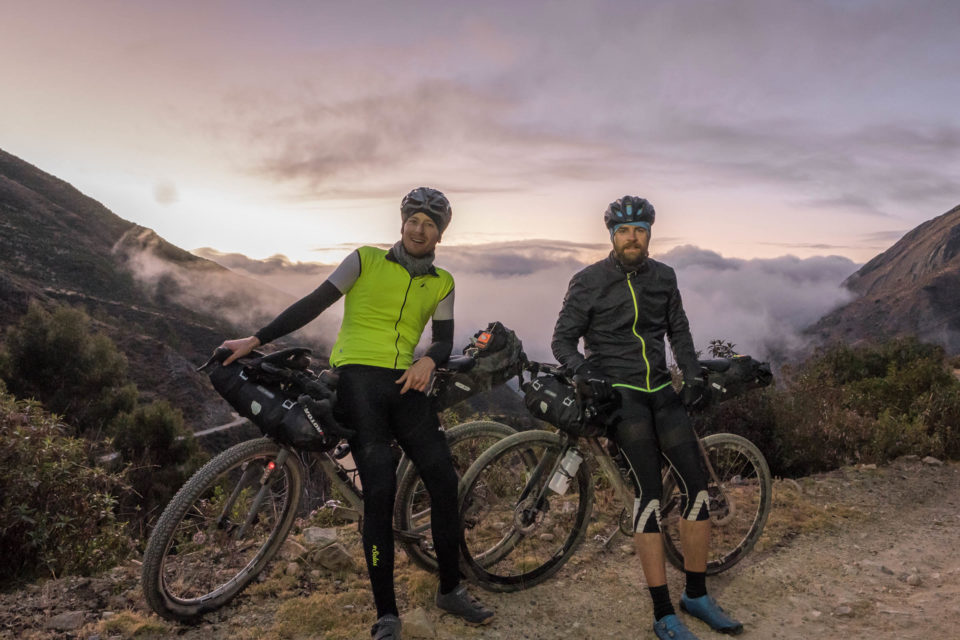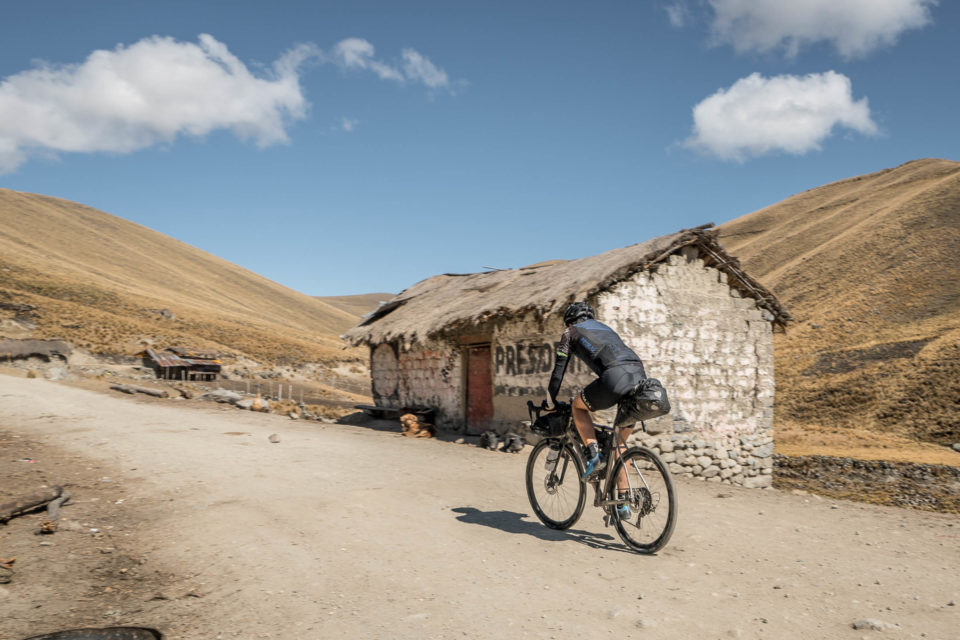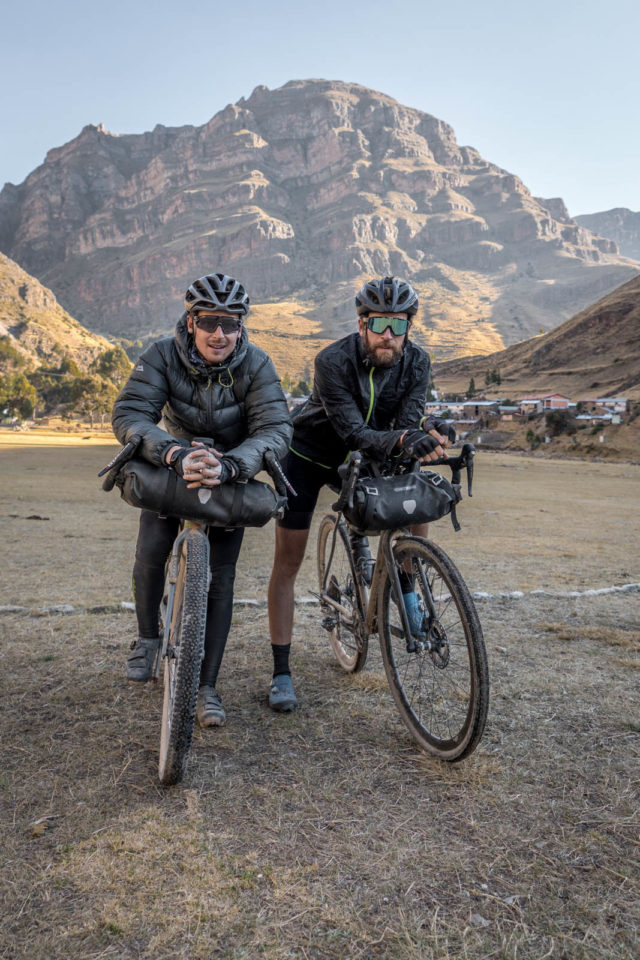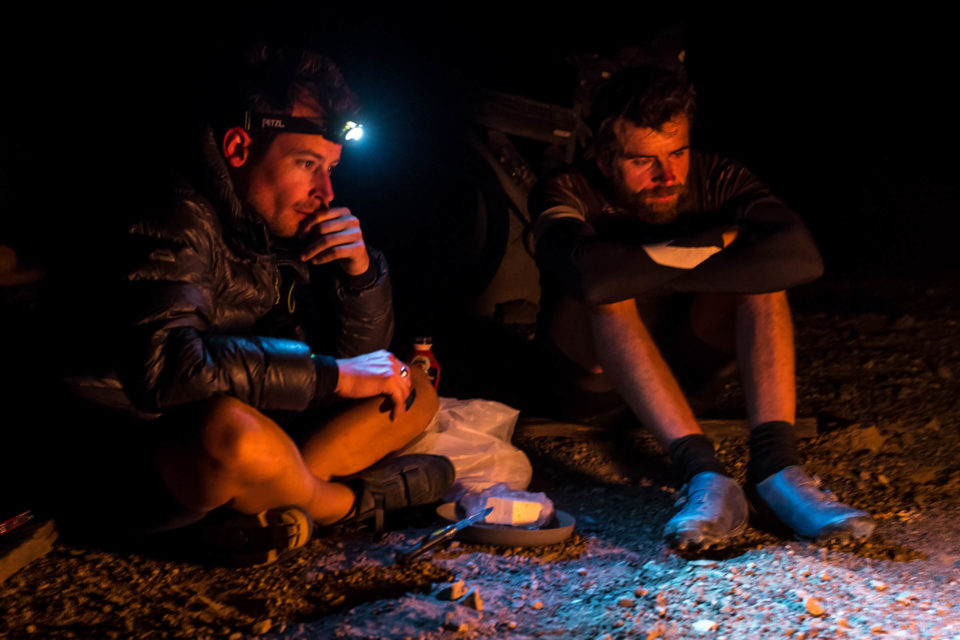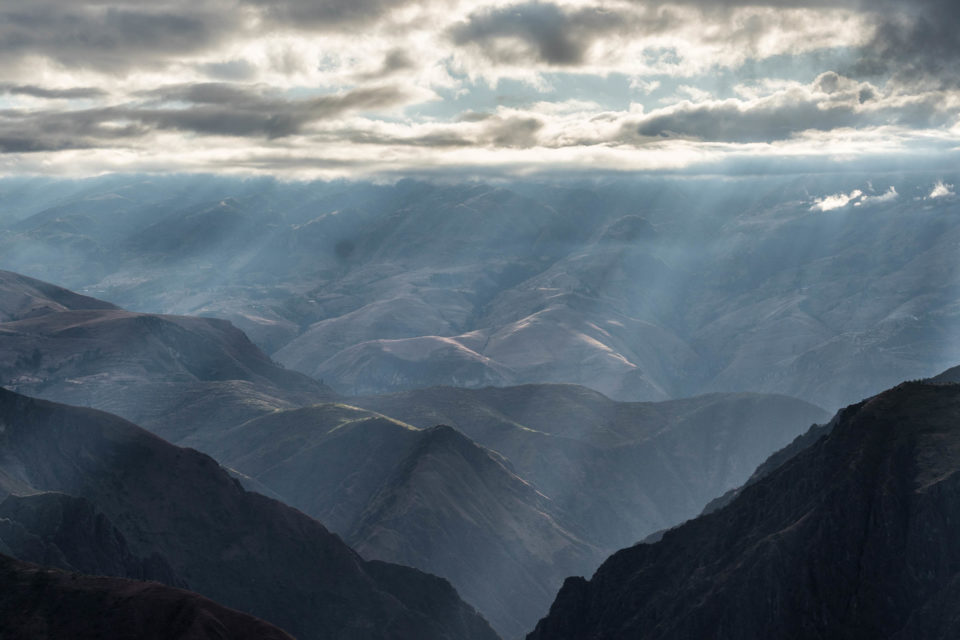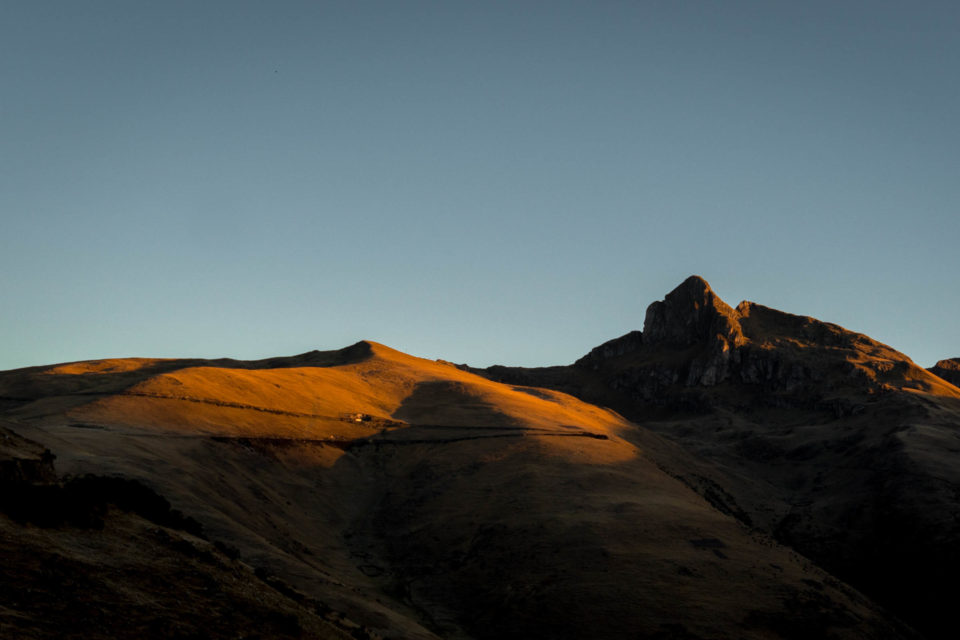In the Footsteps of the Chaskis
No strangers to ultra-distance riding, Axel Carion and Jonas Deichmann set out to tackle the full length of the Peru Great Divide, riding over 1,100 miles in just 16 days. Find Axel’s reflection on their ride here, including details on their route and a beautiful set of photos…
PUBLISHED Dec 20, 2019
Words by Axel Carion (@axel_carion), Photos by Gavin Kaps (@ospreyimagery)
The Andes Mountains are the longest continental mountain range in the world, and also the youngest. It’s been five years since I first had the privilege of exploring the roads of this territory by bicycle. I’ve had the opportunity to ride the entire length of South America twice. First, in 2015, riding 185 days from Cartagena, Colombia, to Ushuaia, Argentina, following the Andes. Then again in 2017, smashing the world record while bikepacking from Cartagena to Ushuaia in 49 days and 23 hours.
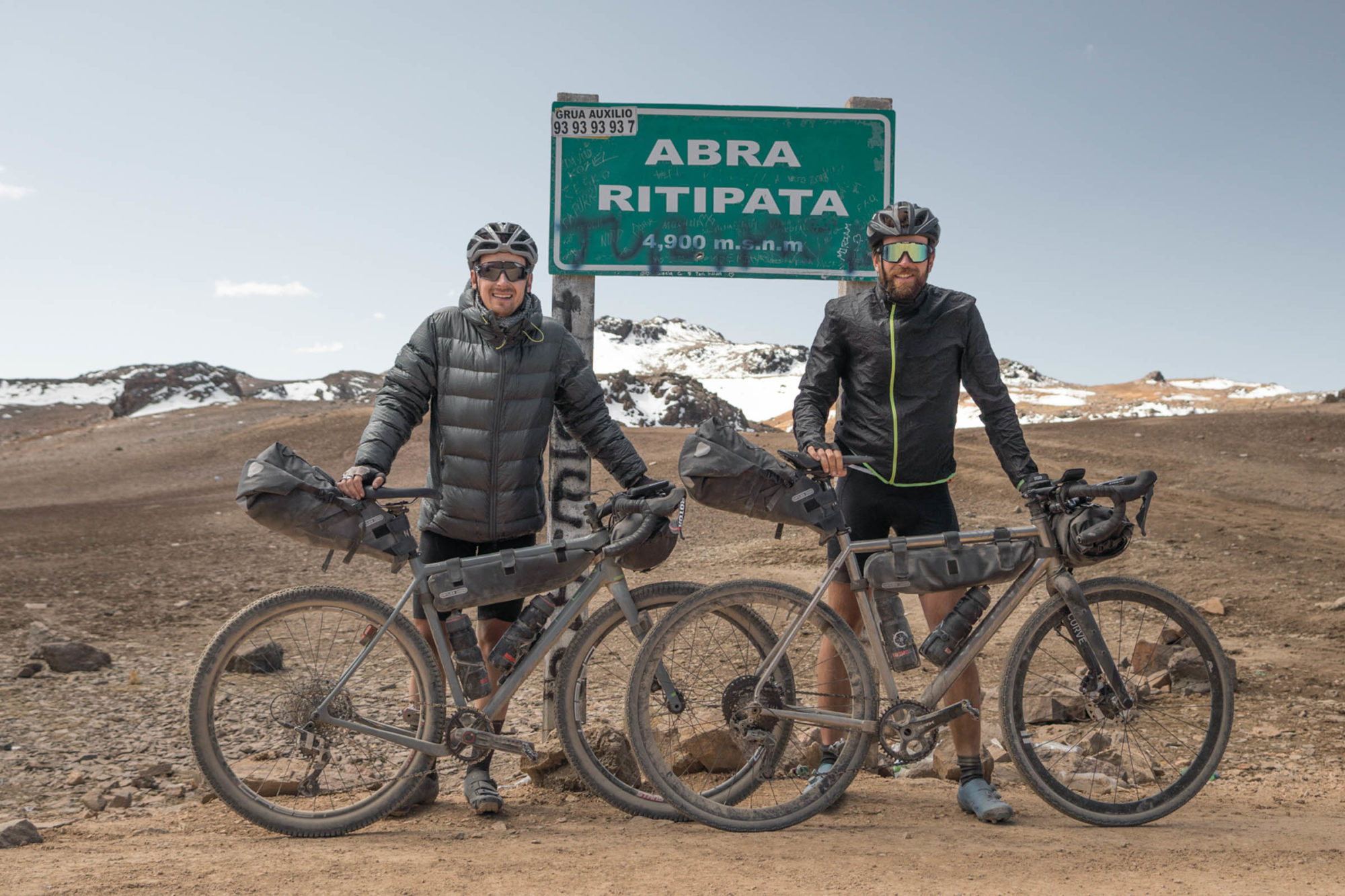
Despite the thousands of kilometers that I had ridden on this continent, I knew very little of its culture, especially one of its most mythical ones, the Incas. As aficionados of long-distance bicycle expeditions, Jonas and I met while he was preparing his Panamerica solo expedition (the fastest crossing of the Americas by bike). At that time, I still held the record of less than 50 days, and I assisted Jonas plan his route. We shared the same curiosity for high-altitude riding and I liked when he decided to make the same detour as me near the Paso de Jama between Chile and Argentina at 4,810m, for the sole quest of adventure and to discover amazing landscapes. In 2019, Jonas participated to several BikingMan events. We discussed the dream rides we would love to complete, and the Peru Great Divide was among them.
The Peru Great Divide (PGD) became known thanks to the diligent work of Neil and Harriet Pike. They called it the Peruvian Great Divide in reference to the American Great Divide. Their route linked the Cordillera Blanca to the main Andean Highway P3S, 400 kilometers from Cusco. However, one piece was missing to start riding from the imperial city of Cusco, so I had to search on maps to connect the missing dots. It was also an opportunity for me to meet up with Octavio Carrasco, a Peruvian in charge of the Qhapaq Ñan conservation (the royal road network built by the Incas centuries ago). He is also a leading expert on the “Chaskis.”

For centuries, Cusco was the command center of the Inca emperor who was ruling and sending messages all across the empire, which extended at its apogee from Pasto (Colombia) to Santiago (Chile). Octavio explained to us how the Incas had dedicated a part of their population to become “Chaskis messengers.” These amazing runners were born and raised as Chaskis for one purpose: running from one huasi (house in Quechua) to the next and from one tambo to another. Tambos served as a point of supply and accommodation for the Chaskis. We had to attempt to ride in the footsteps of these legendary runners.
On the map, our route from Cusco to Conococha village (at the doors of Cordillera Blanca) was baffling: a 1,900 km course with more than 90% of unpaved roads, 35 passes over 4,000m above sea level, and 40,000m of elevation gain. Just examining the profile of the challenge we were jumping into is enough to give you altitude sickness: 15 passes above 4,500m, three above 4,900m, 35 peaks above 4,000m. You have to plan to carry oxygen bottles in your bikepacking bags to get to the end!

We started the expedition from Cusco on Peru’s Independence Day, July 26th, with our gravel bikes and super light bikepacking gear. The months of July and August are in the middle of winter in Peru, the dry season. It’s the best time to explore the Andes Cordillera by bike and we wanted to ride the PGD as fast as possible. Our strategy was built around carrying as little as possible to cycle across the high passes, and sleep in the valleys. We didn’t want to get stuck on top of these mountains with freezing temperatures, no tent, and our 0°C sleeping bags. In summer, the rain is abundant and turns the Andes tracks into a “mud fest,” a real nightmare for cyclists. On paper, Peru is crossed by three major highways:
- The coastal Pan-American 1N / 1S: an unfriendly road for cyclists with constant wind and heavy traffic.
- The Panamerican of the Andes 3N / 3S, extremely hilly and with many high-altitude passes.
- The Panamerican 5N / 5S, which runs along the Peruvian Amazon.

Our expedition consisted of navigating between the coastal and the mountain roads by following very isolated tracks that cross the following regions: Cusco, Apurimac, Ayacucho, Huancavelica, Junin, Lima, and Ancash. Between us, we’ve explored more than 100 countries by bike, and the Peruvian Great Divide is without a doubt the most incredible and spectacular course we have ever done.
From kilometer 0 to kilometer 1900, it’s visually mind blowing. The route crosses many turquoise blue lakes, mountain ranges with thousands of colors, canyons, and the geology of the area is monumental. The many passes provide breathtaking views over the Andes Cordillera, which sometimes seem endless. One morning you can pedal through a cactus field after crossing a gigantic river, and in the evening, you fall asleep at the foot of a 6000m snowcapped mountain. You can experience temperatures from +40°C to -15°C in the same day.
The thought of the Chaskis, running across these mountains in flip-flops, was a frightening and intimidating one. We had the luxury of carrying technical clothing to withstand the temperatures and were on bikes riding on tracks.
The Peruvian people were very welcoming. The higher we climbed, the easier it was meet locals. Conditions in the Andes are rough, but the Peruvians provided unmatched kindness. Every day we ate in small restaurants at the entrance of villages. Often times, we didn’t have any hospedaje (hotel in Spanish) options, and we occasionally had to knock on doors to ask for help to avoid spending the night in freezing temperatures down to -15°C. We were able to sleep several nights in town halls, home stays, and could bivy under the stars when we were below 2500m.

In terms of challenges, the highlight of the expedition was probably the Abra Pumacocha, the highest pass of the course, that rises at 4,990m above sea level. It stands above a rare beauty of a lake. The fight to reach the top on rough tracks was intense. I made it to the summit at dusk and there was still two hours of descent to go! Jonas suffered from soroche (altitude sickness) that day and was forced to rest at a lower altitude. He joined me the next day.
Around 300 km from the finish, we slept with the locals in the village of Huancahuasi at 3,230m above sea level, at the foot of our highest pass of the expedition: Abra Rapaz (4,940m). At sunrise, we followed Peruvians who were lighting their way with their phones. We slipped into a hot spring complex and dove into a 40°C pool. We could smell the sulfur from the mountain, while it was just 8°C outside. There is no better way to motivate yourself in the morning, especially when hot showers didn’t exist along the route. The hot springs were providential and will remain an unforgettable memory of our journey.
The most difficult memory is without a doubt the end of the expedition and the arrival at the foot of the Cordillera Blanca. It took us 12.5 hours of riding to finish that day, which can be summed up the best and the worst of the expedition. At dawn, we descended from the village of Cajatambo (3300m) to the bottom of the canyon where the Pativilca River (1465m) flows into magnificent landscapes. Vertical walls stood in front of us up to 3000m above sea level while we were riding along the river with mild 20°C temperatures. However, the rest of the day was a nightmare, with an endless 100-kilometer climb. The longest passes of the Andes are on average twice as long as those of the Alps (40-50km vs. 20-25km). We had the opportunity to experience one such climb to reach the village of Conococha at 4,200m above sea level. We ended the day at 10:30 PM in freezing temperatures on a rugged track where we had to zig-zag between pot holes and rocks.
In Peru, and especially on this course, there’s not a single easy kilometer. The Peru Great Divide is a brutal course with constant challenges that only stop when you put the bike on the ground next to the night’s bivy spot.
As we reached Conococha village to crash in a hostel, we had ridden 140 hours in the footsteps of the Incas and achieved our goal of 16 days. It was one of the most brutal rides of our lives, and 16 days to ride the entire length of the PGD is almost too fast. Most cycle tourists usually take one to three months. The experience of this route is so mind-blowing that it deserves to be ridden with more time to soak up its beauty, spend more time with the locals, and enjoy a hot spring every day. However, bikepacking this route like the Chaskis, as if we were carrying an invaluable message coming directly from the Inca emperor, put wings on our gravel bikes. After all, whether you’re riding fast or exploring slowly, the only thing that matters is to get out there and spin the pedals.
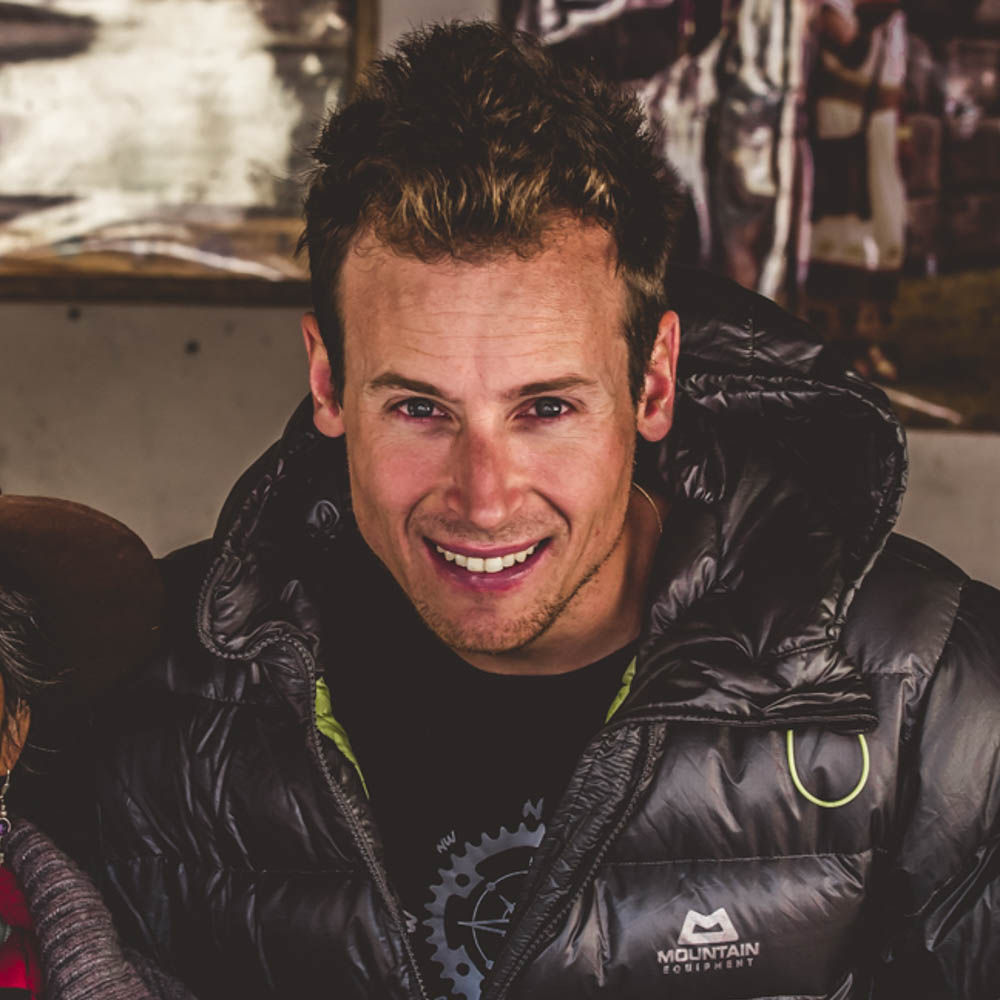
About Axel Carion
Axel Carion is an explorer based on the French Riviera. He shares his adventures through stories, talks, films, and also with BikingMan: the first exploration cycling series that he founded in 2016 after cycle-crossing the Andes Mountains from Colombia to Argentina. He loves exploring new cultures on his bicycle and has a passion for high-altitude cycling. Find Axel on Instagram @axel_carion.
Please keep the conversation civil, constructive, and inclusive, or your comment will be removed.







